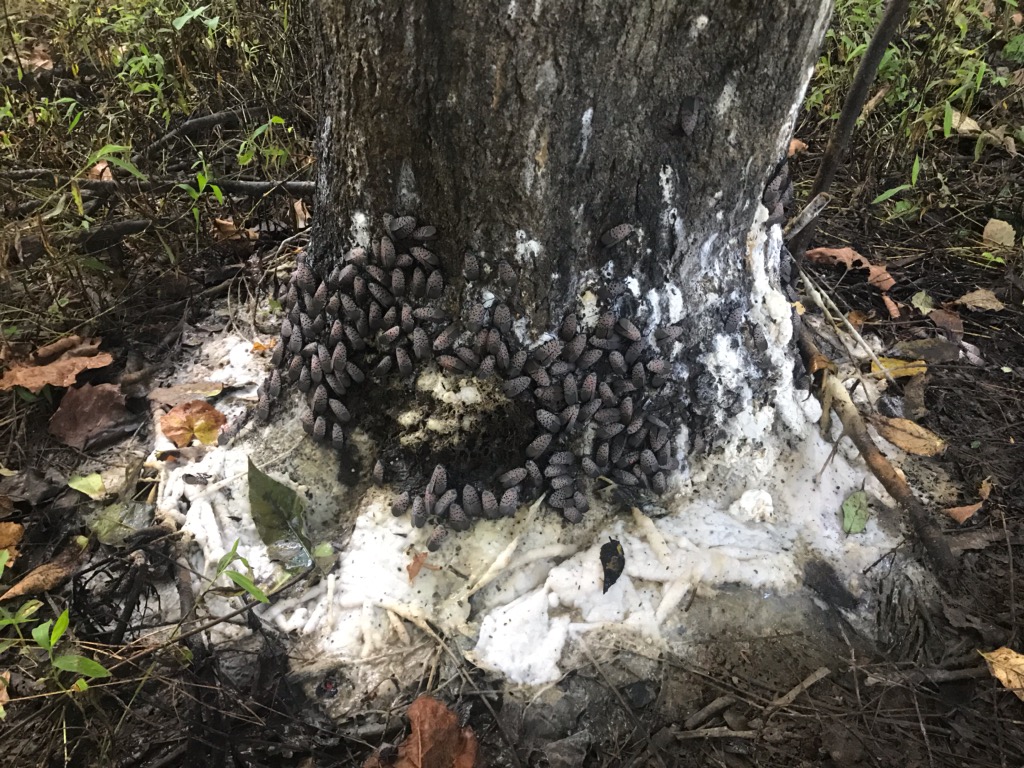Spotted Lanternfly
go.ncsu.edu/readext?832712
en Español / em Português
El inglés es el idioma de control de esta página. En la medida en que haya algún conflicto entre la traducción al inglés y la traducción, el inglés prevalece.
Al hacer clic en el enlace de traducción se activa un servicio de traducción gratuito para convertir la página al español. Al igual que con cualquier traducción por Internet, la conversión no es sensible al contexto y puede que no traduzca el texto en su significado original. NC State Extension no garantiza la exactitud del texto traducido. Por favor, tenga en cuenta que algunas aplicaciones y/o servicios pueden no funcionar como se espera cuando se traducen.
Português
Inglês é o idioma de controle desta página. Na medida que haja algum conflito entre o texto original em Inglês e a tradução, o Inglês prevalece.
Ao clicar no link de tradução, um serviço gratuito de tradução será ativado para converter a página para o Português. Como em qualquer tradução pela internet, a conversão não é sensivel ao contexto e pode não ocorrer a tradução para o significado orginal. O serviço de Extensão da Carolina do Norte (NC State Extension) não garante a exatidão do texto traduzido. Por favor, observe que algumas funções ou serviços podem não funcionar como esperado após a tradução.
English
English is the controlling language of this page. To the extent there is any conflict between the English text and the translation, English controls.
Clicking on the translation link activates a free translation service to convert the page to Spanish. As with any Internet translation, the conversion is not context-sensitive and may not translate the text to its original meaning. NC State Extension does not guarantee the accuracy of the translated text. Please note that some applications and/or services may not function as expected when translated.
Collapse ▲Be on the lookout! An established population of spotted lanternflies was detected in Carrol Co. Virginia, just north of Surry County, NC Spotted lanternflies (SLF) are a new invasive species, first detected in Pennsylvania in 2014. Since then, they have spread to 11 states and have been detected in numerous others, including here in Currituck County. These invasive insects pose a serious threat to vineyards and orchards and produce honeydew, which leads to black sooty mold that coats anything under the bugs (image below). So what do they look like?
Adult and immature SLF are bright and conspicuous. Immatures (nymphs) are black with white spots (image below) until they’re about to become adults, then they change color to bright red with black legs and white spots. As adults, the bugs are about an inch long, with red markings that are hard to miss under their wings. So if they’re so easy to spot, how are they spreading? Their eggs! SLF eggs are tan and are laid primarily on trees. They camouflage well on wood products and are transported on firewood, lumber, and pallets. They can even be laid on cars and other vehicles and cross county and state lines.

SLF are commonly found feeding on Tree of Heaven, another invasive species. If you think you’ve found a SLF, contact the N.C. Cooperative Extension, Currituck County Center at 252-232-2261, or stop by 120 Community Way in Barco N.C. and we’ll take a look. Prevention is key to stopping the spread of this insect. If detected early, quarantine and eradication measures can help prevent establishment. For additional information contact Adam Formella at (252) 232-2261 or by email at adam_formella@ncsu.edu.





